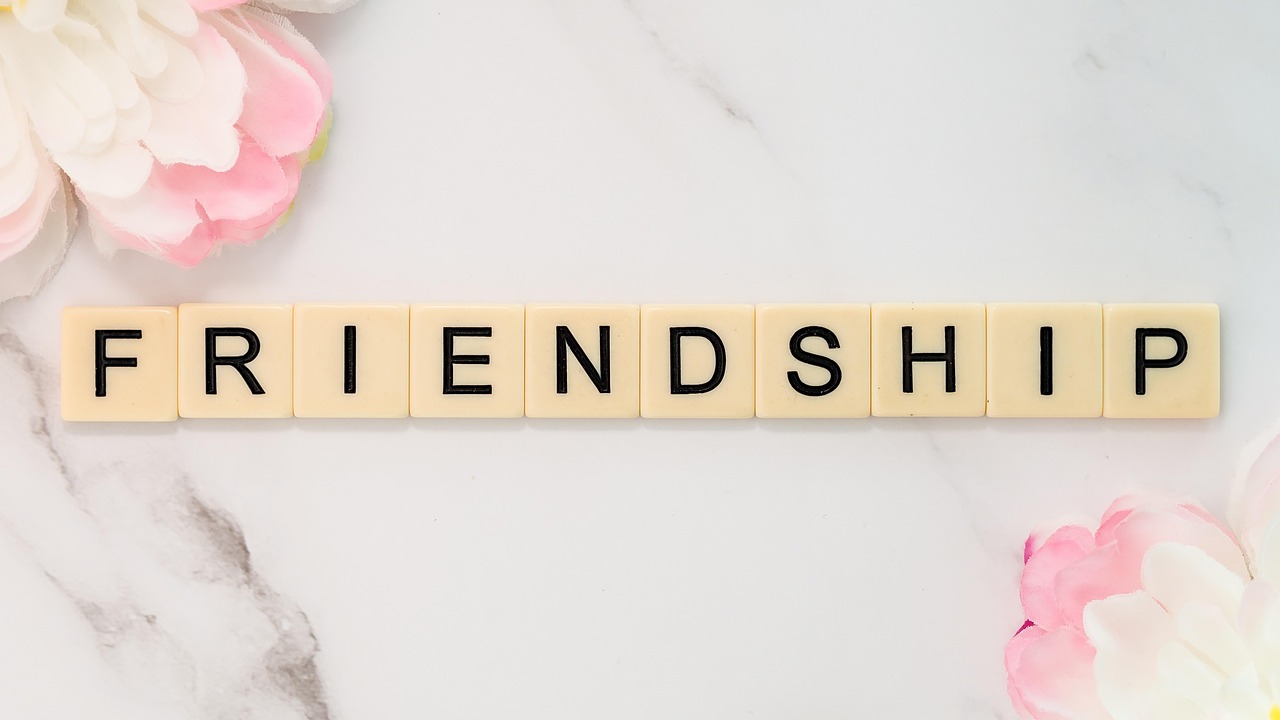Friendships are the threads that weave the rich tapestry of our lives. They offer support, laughter, and a sense of belonging. But, like any valuable relationship, friendships require nurturing. And at the heart of nurturing lies effective communication. Whether you’re navigating a minor disagreement or celebrating a major milestone, knowing how to communicate with your friends can make all the difference in maintaining strong and lasting bonds.
The Foundation of Strong Friendships: Communication
Good communication is the bedrock of any thriving friendship. It’s more than just talking; it’s about understanding, empathy, and genuine connection. Without it, misunderstandings can fester, trust can erode, and even the strongest friendships can crumble.
The Power of Active Listening
Active listening is a crucial skill in any relationship, especially friendships. It involves fully concentrating on what your friend is saying, rather than just waiting for your turn to speak.
- Pay attention: Focus on your friend’s words, body language, and tone of voice.
- Show that you’re listening: Use verbal and non-verbal cues, such as nodding, making eye contact, and saying things like “I understand” or “Tell me more.”
- Provide feedback: Paraphrase what you’ve heard to ensure you understand correctly. For example, “So, it sounds like you’re feeling overwhelmed with work?”
- Defer judgment: Avoid interrupting or jumping to conclusions. Let your friend finish speaking before offering your opinion.
- Respond appropriately: Be honest and thoughtful in your response.
- Example: Imagine your friend is venting about a stressful situation at work. Instead of immediately offering advice, practice active listening. Ask clarifying questions like, “What specifically is making you feel stressed?” or “How long has this been going on?” This shows your friend that you genuinely care and are invested in understanding their perspective.
Open and Honest Expression
Equally important is the ability to express yourself openly and honestly. This means sharing your thoughts, feelings, and needs with your friends in a clear and respectful manner.
- Use “I” statements: Express your feelings from your own perspective. For example, “I feel hurt when you cancel our plans last minute,” instead of “You always cancel on me.”
- Be direct: Avoid beating around the bush or expecting your friend to read your mind.
- Be respectful: Even when discussing difficult topics, maintain a respectful tone and avoid personal attacks.
- Choose the right time and place: Select a time and location where you can both focus on the conversation without distractions.
- Be willing to be vulnerable: Sharing your vulnerabilities can deepen your connection and build trust.
- Example: If you’re feeling neglected because a friend hasn’t been in touch lately, instead of letting resentment build, approach them directly. Say something like, “I’ve been feeling a little distant lately. I miss our conversations and would love to catch up soon.”
Navigating Difficult Conversations
No friendship is immune to disagreements and conflicts. Learning how to navigate these challenging conversations is essential for maintaining healthy relationships.
Addressing Conflict Constructively
Conflict is inevitable, but how you handle it can make or break a friendship. The goal is to resolve the issue while preserving the relationship.
- Stay calm: Avoid raising your voice or becoming defensive.
- Focus on the issue, not the person: Attack the problem, not your friend’s character.
- Find common ground: Identify areas where you agree and build from there.
- Be willing to compromise: Look for solutions that meet both of your needs.
- Take a break if needed: If emotions are running high, take a step back and revisit the conversation later.
- Example: Suppose you and a friend disagree on a political issue. Instead of engaging in a heated debate, focus on understanding their perspective. Ask them why they hold that belief and listen actively to their reasoning. Acknowledge their viewpoint, even if you don’t agree with it.
Setting Boundaries Respectfully
Setting boundaries is crucial for maintaining your well-being in any relationship. It’s about defining what you’re comfortable with and communicating those limits to your friends.
- Know your limits: Identify what behaviors or situations make you feel uncomfortable or drained.
- Be clear and direct: State your boundaries in a straightforward and assertive manner.
- Explain your reasons (briefly): Provide a brief explanation for why you’re setting the boundary.
- Be consistent: Enforce your boundaries consistently to avoid confusion.
- Don’t feel guilty: You have a right to protect your own well-being.
- Example: If you need some alone time to recharge, let your friends know that you won’t be available on certain evenings. Say something like, “I need to take some time for myself on Tuesdays to recharge. I’ll be back online on Wednesday. Thanks for understanding.”
The Role of Technology in Friend Communication
In today’s digital age, technology plays a significant role in how we communicate with our friends. While it offers convenience and connectivity, it’s also important to be mindful of its potential drawbacks.
Balancing Digital and Face-to-Face Interaction
Technology can be a great tool for staying connected, but it’s essential to balance digital communication with face-to-face interaction.
- Schedule regular meetups: Make time for in-person visits, even if it’s just for a quick coffee.
- Use video calls: Video calls allow you to see your friend’s facial expressions and body language, which can enhance connection.
- Be mindful of tone: Tone can be easily misinterpreted in text messages or emails.
- Put your phone away: When you’re spending time with your friends, put your phone away to avoid distractions.
- Example: Instead of just texting your friend happy birthday, consider calling them or arranging a video call to celebrate. A personal touch can make a big difference.
Navigating Social Media in Friendships
Social media can be a great way to share updates and stay connected, but it can also create opportunities for misunderstandings and conflict.
- Be mindful of what you post: Avoid posting anything that could be hurtful or embarrassing to your friends.
- Respect privacy: Don’t share information about your friends without their permission.
- Avoid comparing yourself: Social media can create a distorted view of reality. Focus on your own life and avoid comparing yourself to others.
- Communicate directly: If you have an issue with something a friend has posted, address it directly rather than airing your grievances publicly.
- Example: If you see a friend post something online that upsets you, instead of commenting publicly, send them a private message to discuss the issue.
Maintaining Long-Distance Friendships
Distance doesn’t have to diminish a friendship. With effort and intentional communication, you can maintain strong bonds even when separated by miles.
Staying Connected Despite the Miles
Maintaining long-distance friendships requires proactive effort and creative communication strategies.
- Schedule regular check-ins: Set aside specific times to chat on the phone or video call.
- Utilize technology: Take advantage of messaging apps, social media, and online games to stay connected.
- Send care packages: A thoughtful gift can show your friend that you’re thinking of them.
- Plan visits: If possible, plan occasional visits to see each other in person.
- Share everyday moments: Don’t just wait for big events to communicate. Share everyday moments and experiences to stay involved in each other’s lives.
- Example: Start a virtual book club with your long-distance friend or watch a movie together remotely. Finding shared activities can help you stay connected and engaged.
Overcoming Challenges of Distance
Long-distance friendships can present unique challenges, such as feelings of loneliness, difficulty coordinating schedules, and the potential for drifting apart.
- Acknowledge the challenges: Be honest about the difficulties of maintaining a long-distance friendship.
- Be patient and understanding: Recognize that it may take more effort to stay connected.
- Prioritize communication: Make communication a priority, even when life gets busy.
- Focus on quality over quantity: Even short, meaningful conversations can strengthen your bond.
- Celebrate milestones together: Find creative ways to celebrate birthdays, holidays, and other special occasions.
- Example: If you’re feeling lonely because you miss your friend, reach out to them and express your feelings. Acknowledging your emotions can help you feel more connected.
Conclusion
Effective communication is the lifeblood of any strong friendship. By practicing active listening, expressing yourself openly and honestly, navigating difficult conversations constructively, and leveraging technology wisely, you can cultivate deep and lasting bonds. Remember that friendships require ongoing effort and intentionality. By prioritizing communication, you can ensure that your friendships thrive and enrich your life for years to come.




